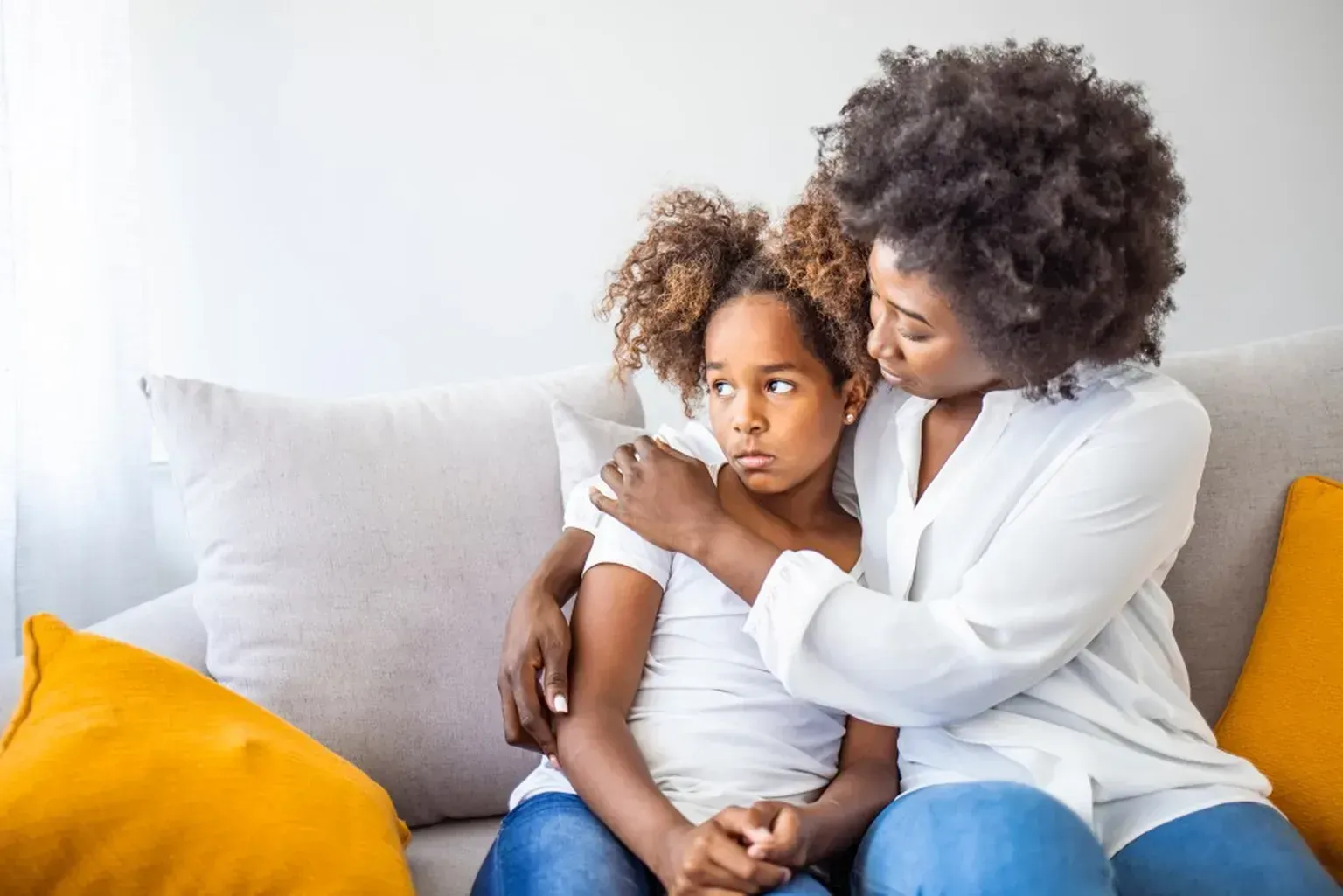
About one in 12 children and one in four teens has an anxiety disorder. Although symptoms vary, being able to identify the signs of anxiety can help you know when to act to support your child’s mental health. At Sunny Hill Pediatrics in Frisco, Texas, Dr. Jung and our caring team have years of experience diagnosing and treating anxiety disorders. Read on to learn common signs to note. What is an anxiety disorder? An anxiety disorder is a mental health condition that causes feelings of intense worry and/or fear. Everyone experiences anxiety occasionally, but if your child regularly feels nervous, restless, or tense, it may indicate a more serious issue. Without treatment, anxiety can affect your child’s quality of life and performance at school. 4 signs of anxiety in children Since anxiety presents differently in children than in adults, identifying the subtle signs is crucial. Here are some common symptoms: 1. A focus on specific fears Young children are often afraid of the dark or monsters hiding under the bed, whereas adolescents may fear certain social situations, like being the last one picked to play dodgeball. Though all children experience strong emotions, if their fear is persistent, intense, or interferes with their daily activities, anxiety may be to blame. 2. Intense fear of separation This sign of anxiety is most common in infants and toddlers between the ages of 18 months and three years . It’s characterized by an intense, ongoing fear of being separated from you (the parent) or other members of your family. Children are often clingy, but if your little one cries or becomes frantic every time you drop them off at daycare or with a babysitter, it could be the result of anxiety. 3. Avoiding play Children are playful by nature. They enjoy acting out stories with their toys, running around with friends, and exploring the playground. However, if your child avoids these activities, it may be a sign of anxiety. Kids who are anxious often avoid activities that make them feel nervous or overwhelmed. So, they may cling to you or sit on the sidelines when given the opportunity to interact with other children. 4. Noticeable physical symptoms Even though anxiety is a mental health condition, it often triggers physical symptoms. For example, your child might complain of frequent stomachaches, headaches, or nausea. These symptoms can also affect appetite and the ability to fall and stay asleep. Of course, all children experience aches and pains, but if you notice these symptoms occurring at specific times—like right before it’s time to leave for school—scheduling an anxiety and depression screening can provide peace of mind. We can help you determine if your child or teen has anxiety! If you’ve noticed your child or teenager displaying any of the symptoms above, contact Sunny Hill Pediatrics today . After a physical exam and psychiatric testing, we can determine if your child has an anxiety disorder. A combination of healthy lifestyle changes and prescription medication can help ease their anxiety and ensure your child thrives. Call our Frisco, Texas office, or book an appointment online.
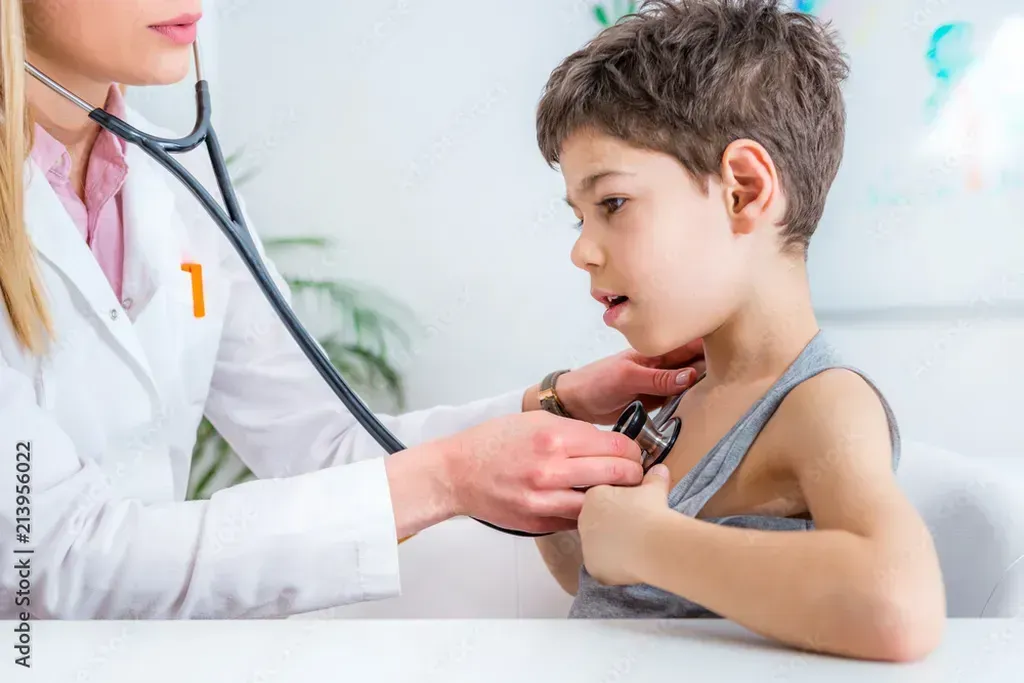
About 4.6 million American children have asthma. If your child is one of them, it’s normal to wonder about the potential treatment options and their pros and cons. At Sunny Hill Pediatrics in Frisco, Texas, Dr. Jung and our caring team provide complete care for childhood asthma. This blog explains what asthma is and highlights several of the most common therapies for relief. What is childhood asthma? Childhood, or pediatric asthma , is a chronic respiratory disease that causes airway inflammation and difficulty breathing. It’s the same disease that affects adults, but children are more likely to experience side effects that interfere with their sleep or ability to play and have fun with friends. Telltale signs of childhood asthma include: Shortness of breath Wheezing or whistling sounds when exhaling Fatigue Trouble breathing that affects play and other activities Poor sleep Bouts of coughing and wheezing Your child may also experience chest pain or congestion, depending on the asthma’s severity. 6 treatment options for childhood asthma Asthma treatment recommendations vary, depending on your child’s age, symptom severity, and triggers. The goal is to keep your child’s symptoms under control and prevent limitations on physical activities and exercise. For children 3 and under who have mild asthma, we take a “watch and wait” approach. That’s because there isn’t enough research on the long-term effects of asthma medications in these populations to ensure safety. However, if your infant or toddler has severe symptoms, we may prescribe something to see how it works. Here’s a closer look at several commonly prescribed asthma treatments: 1. Inhaled corticosteroids These medications reduce inflammation in the lungs that triggers asthma symptoms. Common examples include fluticasone, budesonide, and beclomethasone. Most children need to take inhaled corticosteroids for several days or weeks before they start working. Long-term use may slow growth slightly, but the benefits of treatment outweigh this potential risk. 2. Theophylline (Theo 24) This medication is a daily pill that helps keep the airways open. Specifically, it relaxes the muscles around the lungs, making it easier for your child to breathe. We typically prescribe theophylline with an inhaled corticosteroid. Treatment is effective, but regular bloodwork is necessary to monitor the level of medication in your child’s body. 3. Combination inhalers These medications contain an inhaled corticosteroid and a long-acting beta-antagonist (beta-blocker). Beta-blockers can be beneficial for asthma because they support heart function and blood pressure , reducing shortness of breath. Research suggests beta-blockers by themselves can trigger severe asthma attacks, so we only prescribe them to children whose asthma doesn’t improve with other medications. 4. Immunomodulatory agents We may prescribe an immunomodulatory agent, such as dupilumab or benralizumab if your child is 12 or older and has severe eosinophilic asthma . This type of asthma causes abnormally high levels of eosinophils (a type of white blood cell) in the airways. Immunomodulatory agents target specific immune pathways and reduce inflammation. They’re often prescribed to children who don’t respond to other asthma treatments, like inhaled corticosteroids. 5. Quick-relief medicines Also known as rescue medicines, these drugs quickly open airways to provide immediate relief during an asthma attack. Most children with asthma keep a quick-relief inhaler on hand, in case their symptoms flare up during play or exercise. 6. Allergy medicines Sometimes, asthma is triggered or exacerbated by allergens, like dust mites, pollen, and pet hair. If your child suffers from allergy-related asthma, we may also prescribe oral or nasal spray antihistamines and decongestants. These drugs reduce the immune system’s response to allergens, easing symptoms and improving respiratory health. We can develop a personalized asthma treatment plan for your child! If you’re concerned about your child’s asthma, contact Sunny Hill Pediatrics today . After a physical exam, respiratory testing, and bloodwork, we can make personalized treatment recommendations that reduce symptoms and improve your child’s quality of life. Call the office in Frisco, Texas, or click our online booking feature.
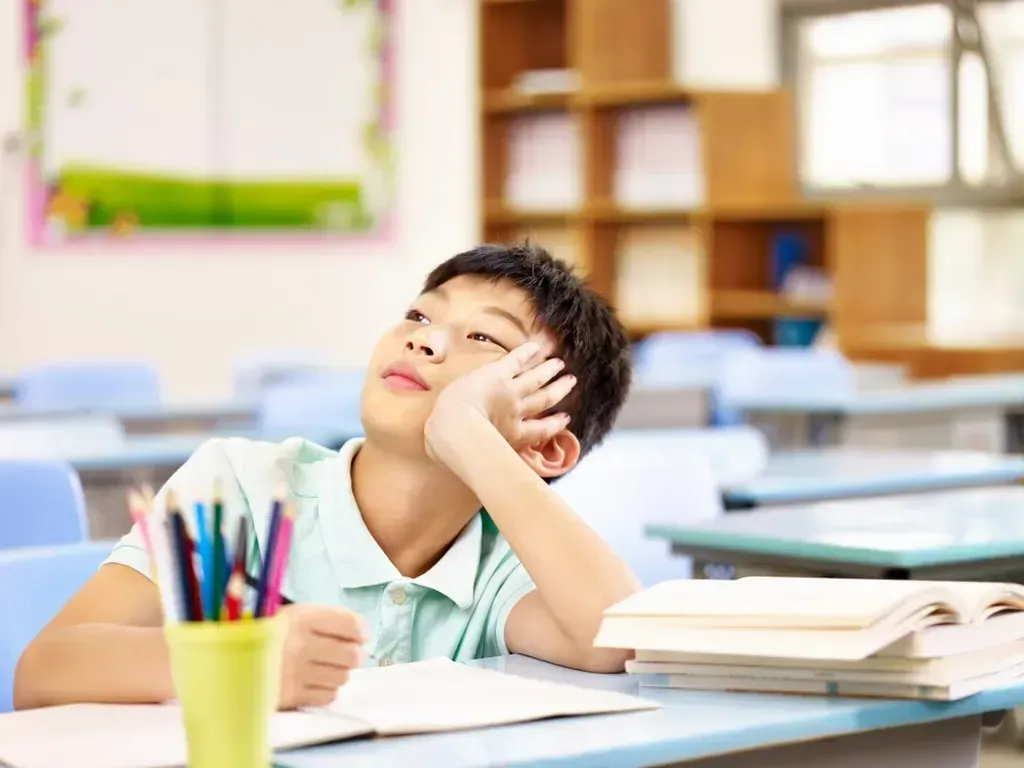
About seven million American children have attention-deficit/hyperactivity disorder (ADHD). This chronic behavioral condition is characterized by difficulty focusing, fidgeting, and impulsivity, but it can be challenging to tell whether your little one’s symptoms are normal or if they point to a more serious issue. At Sunny Hill Pediatrics in Frisco, Texas, Dr. Jung and our caring team specialize in diagnosing and treating ADHD in children and teens. This blog explains how to tell the difference between normal restlessness and ADHD. Is it normal for children to be restless? Yes. Children, especially young children, tend to be restless and unfocused. The world is a big place, and everything in a child’s environment is new and interesting. It’s no wonder that so many parents report feelings of exhaustion just trying to keep up. However, if your child is so active or noisy that it affects their ability to stay on task, make friends, or practice good manners, it may indicate a behavioral condition, like ADHD . 4 distinctions between restlessness and ADHD Since the difference between normal and problematic behavior is often razor-thin, looking for certain telltale signs is crucial. Here are four things to keep in mind if you’re concerned about your child’s risk of ADHD. 1. The severity and prevalence of your child’s symptoms Kids have significantly more energy than adults and teens, so it’s normal for them to fidget, run around, and goof off. But, if your child has ADHD, you may notice these symptoms occurring daily. Kids without ADHD tend to focus and follow instructions when asked. However, kids with ADHD often can’t pay attention long enough to hear and understand the directions a parent or teacher gives. This can make it seem like they aren’t paying attention, even if they want to listen. 2. The symptoms’ impact on your child’s daily life Most children occasionally misbehave at school. It’s a natural part of learning to manage impulses and emotions. If, however, your child’s behavior affects their ability to make friends, complete assignments, or follow their teacher’s instructions, getting them screened for ADHD is crucial. Our caring pediatrician knows how to spot the subtle signs of ADHD and can complete several assessments to confirm your child’s diagnosis. 3. Whether your child has problems paying attention Many young kids find it difficult to sit still. With so much energy, it’s normal for them to want to run around and play with their friends. However, ADHD causes problems beyond restlessness. If your little one is easily distracted or finds it challenging to complete homework or house chores, they likely have ADHD. 4. Whether your child practices age-appropriate behavior Your child might be in the fifth grade, but that doesn’t mean they have the same social skills as their classmates. Within any class, kids’ ages can vary by up to a year. Rather than comparing your child’s behavior to their peers, consider what other kids their age are doing. Since research shows younger kids are disproportionately diagnosed with ADHD , you mustn’t jump to conclusions. What to do if you’re concerned about your child’s risk of ADHD If you’re concerned your child’s behavior is caused by ADHD rather than run-of-the-mill restlessness, don’t wait to schedule an appointment with us. As an experienced pediatrician, Dr. Jung can conduct a comprehensive developmental screening to determine the source of your child’s symptoms. If he confirms your child has ADHD, Dr. Jung develops a personalized treatment plan that includes prescription medication, lifestyle changes, and counseling. Combined, these factors can help your child stay on task and excel at school. Contact Sunny Hill Pediatrics today if you’re concerned about ADHD. Call the office in Frisco, Texas, or click our online booking feature.
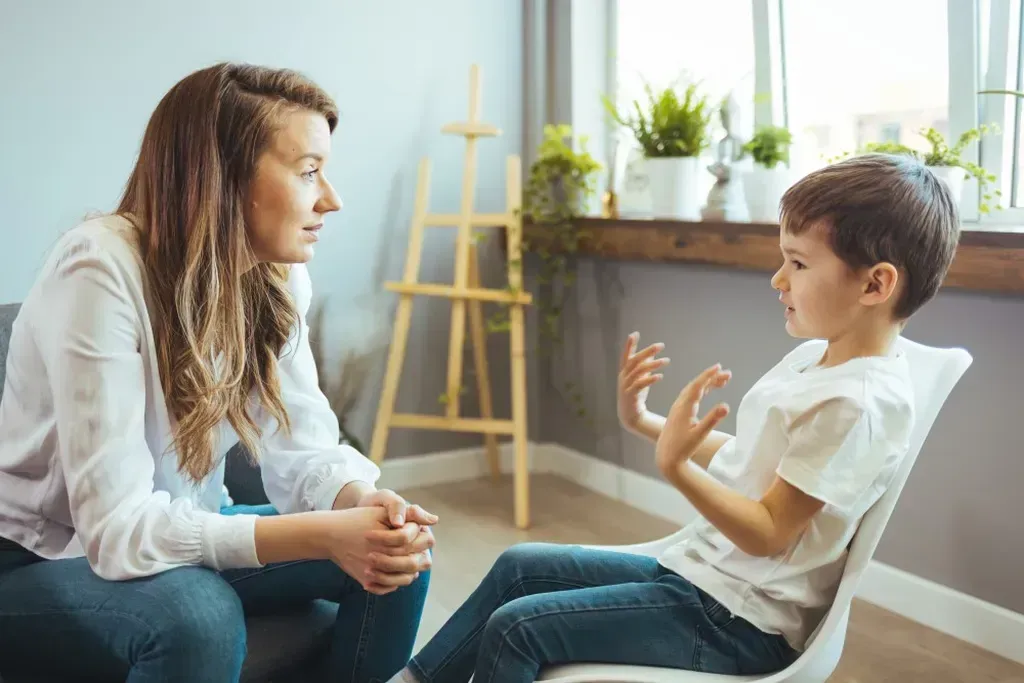
All children experience a range of emotions, but if your little one feels “blue” for more than a few days, and it prevents them from engaging in activities they enjoy or spending time with friends, a more serious problem, like childhood depression, may be to blame. At Sunny Hill Pediatrics , Dr. Jung and our caring team have years of experience diagnosing and treating childhood depression. Here, we explain what childhood depression is and explore some of its most common causes. What is childhood depression? Childhood depression is a chronic mood disorder that affects the way your child or teen behaves and thinks. If your child has depression, they may experience sadness that lasts for two weeks or longer. They might also lose interest in activities they used to love or feel hopeless. Even though all children experience emotional ups and downs, persistent feelings of sadness could indicate a mood disorder. Thankfully, various treatment options exist. Common causes of depression in children Experts aren’t entirely sure why some children have depression, but several factors are thought to contribute, including: 1. Family history of depression Research suggests children with depressed parents and grandparents are more likely to experience depression themselves . Similarly, children of depressed parents are more likely to feel like they’re responsible for their parents' symptoms . To be clear, just because you or your partner have depression doesn’t mean your child will, too. However, it can increase their risk. 2. Stressful life events For many people, childhood is a time of exploration and joy. Unfortunately, not every child has such a positive experience. Stressful life events like bullying, divorce, or the death of a loved one, can have long-lasting effects on children’s mental health. Some children have natural coping skills, while others struggle to adjust to these significant life events. Without an adequate support system in place, depression may occur. 3. Chronic health problems Chronic illnesses, like Type 1 diabetes and epilepsy, require daily treatment and monitoring. However, the constant need for doctor’s visits, healthy lifestyle changes, and prescription medications can affect your child or teen’s mood, outlook, and quality of life. For instance, if your child has Type 1 diabetes, they may need to avoid fun school events like Trunk or Treating or sharing birthday cake with friends. These things may seem inconsequential in the grand scheme of things, but they can be devastating for kids. Research backs up this thinking. Studies have found that children with Type 1 diabetes are more likely to experience depression and other psychological disorders than children without. 4. Personality Each child has a unique personality that makes up their distinctive character. Some personality traits are thought to increase the risk of depression. For example, one study found that neurotic teens are more likely to have depression , while another found that introversion contributed to depression . Neuroticism is the tendency to experience negative emotions, like anger and sadness. Introversion, on the other hand, is the tendency to be shy and self-conscious. We can help your child or teen manage depression! If you’ve noticed behavioral or emotional changes in your child or teen, don’t wait for professional help. A combination of counseling, prescription medication, and activity changes can improve your child’s outlook and quality of life. Contact Sunny Hill Pediatrics today if you’re concerned about childhood depression. Call the office in Frisco, Texas, or click our online booking feature.
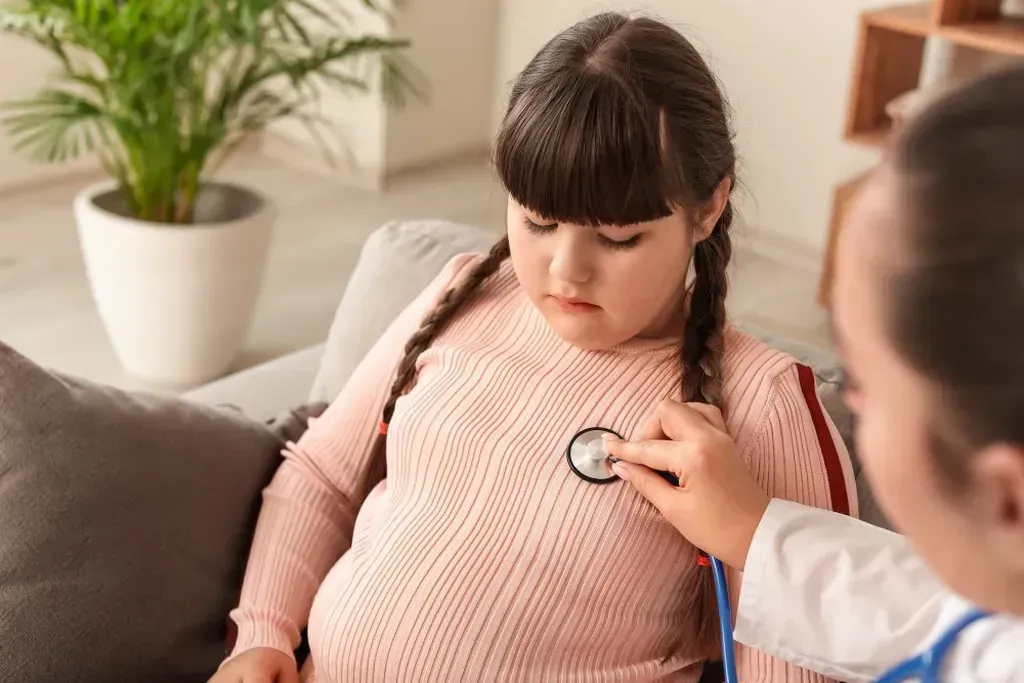
As a parent, you have a lot to keep in check. So much so, that childhood obesity likely doesn’t top your list of concerns. However, studies show that about 19.7% of US children and teens are obese and the number continues to rise. At Sunny Hill Pediatrics , Dr. Jung and our caring team specialize in obesity treatment. Here, we explore why the childhood obesity epidemic is growing and explain how we can help your child improve their health. Why is childhood obesity such a problem? Childhood obesity occurs for various reasons. Here’s a closer look at the three biggest contributing factors: 1. Lifestyle factors Modern society provides many benefits, but it’s also changed how our kids eat and play. During the last 20-30 years, restaurant portions have doubled or tripled in size . The calorie content of meals has also increased and continues to increase by about 30 calories per decade . Kids’ behaviors have also changed. For instance, when you were young, you probably spent afternoons going outside with friends. Riding bikes, playing tag, and swinging at the playground were the norm, but not so much anymore. One study found that only 27% of modern children play outdoors, compared to nearly 71% of baby boomers. 2. COVID-19 The COVID-19 pandemic turned the world upside down. During the early days, school was canceled, which changed many families’ habits. There was no more recess, and social distancing protocols prevented kids from playing and spending time with friends. Even though most schools reopened by 2021, the pandemic had lasting effects on children’s health. A study in JAMA Pediatrics found that childhood obesity rates increased over 3% between August 2019 and August 2020. 3. Genetic factors Obesity tends to run in families. For example, studies show that when one parent is obese, a child has a 50% risk of becoming overweight too. That number jumps to 80% if both parents are obese. You can’t change your genetics, but you can set a good example for your children. Eating healthy, balanced meals and exercising regularly can encourage your little ones to follow suit. How childhood obesity is treated It’s heartbreaking to see your child struggle with their weight, but those struggles don’t have to be permanent. A qualified pediatrician can identify the cause of your child’s obesity and develop a personalized treatment plan. After an exam and a review of your child’s medical records, Dr. Jung might suggest: Dietary changes with a doctor-supervised meal plan Exercise support or a referral to a personal trainer Educational materials on nutrition Hormone testing to identify underlying health problems Behavioral counseling (talk therapy) Treating childhood obesity is a complex process that involves follow-up appointments and progress monitoring. Dr. Jung observes your child’s health and wellness over time, adjusting the care plan as needed to ensure optimal results. Contact Sunny Hill Pediatrics today if you’re concerned about childhood obesity. Call the office in Frisco, Texas, or click the online booking feature.

The influenza or flu virus is one of the most common upper respiratory infections. Anyone can catch the flu, but infants and children are particularly at risk, because of their growing immune systems. Most flu cases are mild, but the virus accounts for more than 20,000 hospitalizations annually in children 5 and under. That’s a scary statistic, but getting your child’s flu shot early can help. At Sunny Hill Pediatrics , Dr. Jung and our caring team administer various childhood vaccinations, including the seasonal flu shot. Here, we explain why getting the flu shot early can provide peace of mind and protect your child’s health. What is the flu shot? The flu shot, or influenza vaccine , is a preventive measure that stops the influenza virus in its tracks. Specifically, it trains your child’s immune system to identify the flu virus and create antibodies that fight off the disease. The flu shot won’t necessarily prevent your little one from getting sick, but it can significantly reduce the risk of severe outcomes like hospitalization and death. At the same time, vaccination reduces the spread of disease, protecting your family and the community. 4 reasons to get your child’s flu shot early Flu season doesn’t officially start until October, but there are several reasons it’s a good idea to schedule your child’s flu shot early, including: 1. Your child might need more than one shot If your child is between 6 months and 8 years old and they’ve never received a flu shot, they might need two separate doses. Since the doses are given at least four weeks apart, scheduling your child’s flu shot now can ensure they’re fully vaccinated by the end of October, when the risk of infection kicks into high gear. 2. It takes time to develop flu antibodies After immunizations enter the body, it takes several weeks for the immune system to produce antibodies. Antibodies are blood proteins that look for and defend against harmful microorganisms, like viruses and bacteria. Since it can take up to 14 days or longer for these antibodies to start working, the sooner you schedule your child’s flu shot, the better. 3. School is back in session Now that school is back in session, your child is in close contact with other people. School and daycare settings provide an optimal environment for the flu to spread, and if your child isn’t protected, they may bring the virus home. Scheduling a flu vaccination now can reduce some of this risk and help your child stay healthy throughout the fall and winter. 4. Children with weakened immune systems are susceptible to severe side effects Kids with chronic illnesses and weakened immune systems are more likely to experience severe flu-related side effects than those without. The Sunny Hills Pediatrics team recommends scheduling an early flu shot if your child has: Asthma Obesity Diabetes A congenital heart defect Brain or nervous system disorders Allergies Scheduling your child’s flu vaccination now can bolster their immune system and help them stay healthy. Does my child need a flu shot if they got one last year? Yes. Scheduling an annual flu shot is crucial, regardless of whether your child has received one in the past. Why? We’ve learned that the flu virus constantly evolves. Drug manufacturers develop a new flu vaccine every year based on the most prevalent strain of the virus. At the same time, the number of viral antibodies in our bloodstream decreases over time. An annual flu shot restores these levels, so your child is better protected. Contact Sunny Hill Pediatrics today if your child or teen needs to schedule their annual flu shot. Call the office in Frisco, Texas, or click the online booking feature.
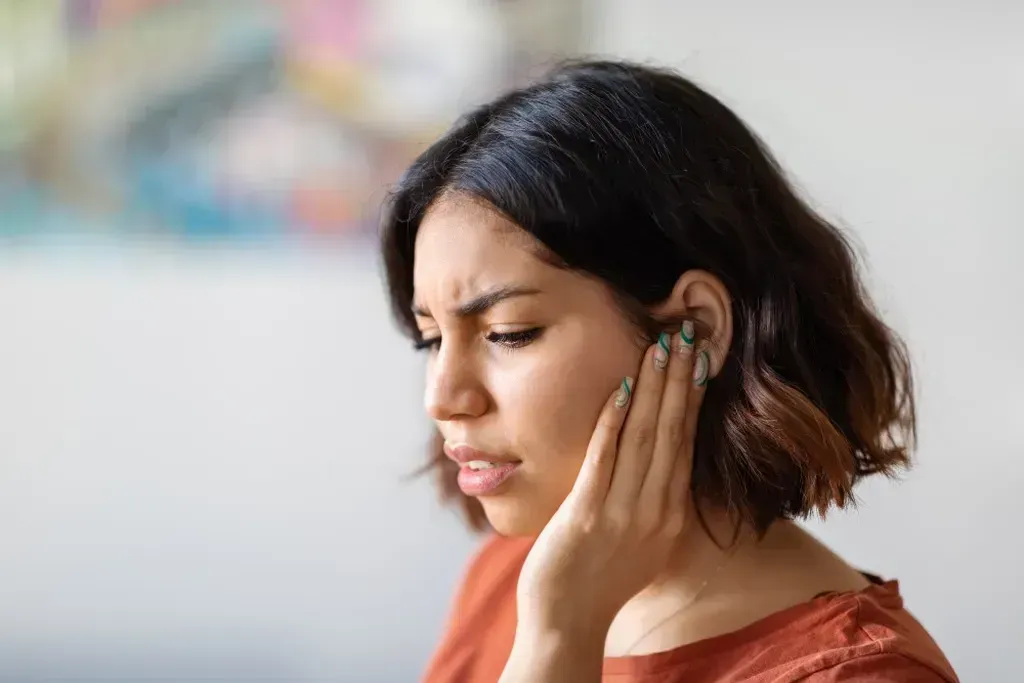
Many parents assume that ear infections are more likely in the fall and winter during the cold and flu seasons. However, the reality is that summer ear infections are just as likely. If your child or teen complains of pain or a feeling of fullness in their ears, seeking treatment is crucial. At Sunny Hill Pediatrics , Dr. Jung and our caring team have years of experience diagnosing and treating summer ear infections. Here, we explain why summer ear infections occur, highlight common symptoms to watch out for, and discuss potential treatments. Why are ear infections so common during the summer months? Several factors make summer a prime time for ear infections. First, many kids enjoy water activities like swimming, diving, and paddle boarding this time of year. Spending time underwater exposes the ear canal to germs and can cause water to become trapped in the ears. Second, warm temperatures and high humidity allow bacteria to thrive, increasing the risk of exposure to harmful microorganisms. Combined, these factors make ear infections increasingly likely. Are there different types of summer ear infections? Dr. Jung and our team treat several types of summer ear infections, including: Swimmer’s ear Swimmer’s ear is the term for an infection of the outer ear canal. It occurs when water gets trapped inside the ear, creating a hospitable environment for bacteria to thrive. Middle ear infections (otitis media) Otitis media refers to an infection of the air-filled space behind the eardrum (the middle ear). Children are especially susceptible to these infections because their Eustachian tubes — narrow passageways that run from the middle ear to the back of the throat — are smaller than in adults. This makes them more likely to trap bacteria and water. What are the symptoms of summer ear infections? Summer ear infection symptoms include: Itching in the ear canal Redness Mild discomfort Clear ear drainage Ear pain (especially when lying down) Decreased or muffled hearing Headaches Difficulty sleeping Infants and small children with ear infections often cry more than usual and may tug or pull at their ears. How are summer ear infections diagnosed? Dr. Jung diagnoses ear infections during an in-office exam. He reviews your child’s medical records and asks about their symptoms, including when they started, how severe they are, and if they’ve worsened during the last 24-48 hours. Next, Dr. Jung completes several tests, including: An ear canal exam During this test, Dr. Jung uses a handheld tool with a light on the end, called an otoscope , to view your child’s ear canal. Tissue that’s red, swollen, or scaly often indicates swimmer’s ear. Pneumatic otoscope If your child doesn’t have visible symptoms of swimmer’s ear, Dr. Jung uses another tool, called a pneumatic otoscope , to look for fluid behind their eardrum. The pneumatic otoscope lets Dr. Jung puff air up against the eardrum. In a healthy ear, this air pressure causes the eardrum to move. If your child has an ear infection, little or no movement occurs because of fluid buildup. An assessment of your child’s eardrum Ear infections can present similar symptoms to eardrum damage. Dr. Jung looks at your child’s eardrum to ensure it isn’t torn or damaged. How are summer ear infections treated? Treatment of summer ear infections depends on several factors, including the type of ear infection your child has and the severity of their symptoms. Dr. Jung might recommend: Cleaning the outer eardrum to remove discharge and buildup Steroid eardrops to reduce inflammation Antibacterial eardrops to fight a bacterial infection Antifungal eardrops to fight a fungal infection Over-the-counter pain medication to reduce discomfort Most children respond well to these measures. However, if your child has a history of chronic ear infections, Dr. Jung might recommend ear tubes. Ear tubes are small, hollow tubes implanted in your child’s eardrum. They prevent fluid from building up in the middle ear and fall out on their own after 4-18 months. Contact Sunny Hill Pediatrics today if your child or teen is experiencing ear infection symptoms. Call the office in Frisco, Texas today, or book your appointment online.
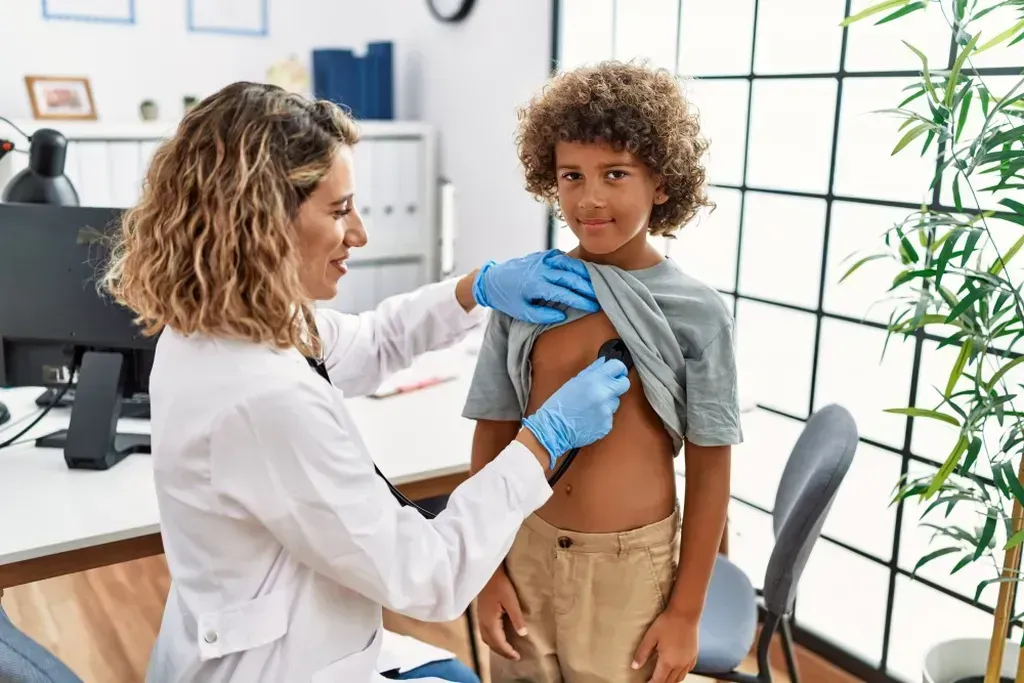
By the time your child is school-aged, you’ve likely brought them to the pediatrician’s office for more than a few visits. Some of these appointments might have been for physical exams, which evaluate your child’s health and often their growth and development. Unlike a sick visit , a physical exam focuses on your child’s wellness instead of symptoms or illness. A typical pediatric physical covers all of your child’s basic health parameters, from their vital signs (e.g., heartbeat and respiration) to hearing and vision. Some pediatric physical exams provide a general overview, while others serve more specific purposes, like school physicals and sports physicals. Board-certified pediatrician Min Jung, MD, is here to ensure you schedule your children’s school and sports physicals at the best possible time, which is right now. At Sunny Hill Pediatrics in Frisco, Texas, Dr. Jung and our team provide detailed school and sports physicals to ensure your child is ready for the new school year by the end of summer break. Here, we detail why school and sports physicals are important and what to expect during these visits. Understanding sports physicals Sports physicals are also called preparticipation physical exams, because your child needs one before participating in any athletic activity through school or any other activity program. Most pediatric organizations recommend children get 60 minutes of moderate to vigorous exercise every day. Enrolling in organized sports helps your child meet that recommendation and experience the health and wellness benefits of regular physical activity. Even if your child already meets or exceeds a daily hour of exercise, a sports physical ensures that they’re healthy enough to participate in sports. The goal of a sports physical is to identify any medical conditions or preexisting injuries that could limit your child from fully engaging in their sport of choice. Asthma and cardiovascular conditions are a couple of examples of conditions that could affect their participation. Understanding school physicals School physicals are comprehensive medical exams every child must get before a new school year starts. Most schools have enrollment requirements for children, and verifying their health through a physical examination is one of them. In some cases, school physicals identify health conditions that need treatment or management. Physical and mental health conditions can affect your child’s school performance and overall well-being, and a school physical might be the best opportunity to discover and treat them. During a school physical, Dr. Jung might identify: Asthma Anxiety and depression Attention-deficit/hyperactivity disorder ( ADHD ) Epilepsy Eating disorders Obesity Sleep problems Each of these conditions and others can affect your child’s well-being while in school. School physicals also present the perfect opportunity to update your child’s vaccines ahead of the upcoming school year. Are school and sports physicals the same? School and sports physicals may not serve the same purpose, but they share a few similarities. Sports physicals primarily focus on physical fitness, while school physicals take a more comprehensive overview of your child’s health. During both visits, you can expect to answer a few questions about your child’s health. Dr. Jung may ask about your child’s medical history, diet, and lifestyle. During the exam, you’ll also have the opportunity to ask questions about your child’s health. Dr. Jung documents your child’s school or sports physical to verify their clearance to participate in sports or enroll in school for the new year. Don’t wait until the end of summer to book your child’s school or sports physical — schedule at Sunny Hill Pediatrics in Frisco, Texas, today. For school and sports physicals, call our office or request an appointment online .

Nearly 20% of kids have a seasonal allergy, according to the CDC , with symptoms that can include sneezing, headaches, itchy or watery eyes, itchy skin, wheezing, and coughing. Allergy symptoms can be uncomfortable for kids of all ages, especially if they also have asthma. At Sunny Hill Pediatrics , Min Jung, MD , and his team also offer treatment for summertime allergies and asthma . Here, learn five ways you can help your child manage their allergy symptoms this summer. 1. Understand your child’s triggers Allergies happen when your body’s immune system overreacts to specific substances called allergens. Knowing which allergens trigger your child’s symptoms is essential to learning how to manage symptoms. There are hundreds of potential triggers, but the most common summertime triggers include pollen, mold spores, and smoke from campfires and barbecues. Once you pinpoint your child’s triggers, you can take steps to avoid them or at least have medication on hand that can help control them. 2. Keep track of the pollen count Pollen is one of the most common summer allergy triggers for kids and adults, thanks to all those beautiful Texas wildflowers and trees in full bloom. Even crops release pollen. Keeping track of the day’s pollen count is a great way to reduce your child’s allergy symptoms. You can find daily pollen counts at Pollen.com and the National Allergy BureauTM . In general, pollen counts tend to be lowest in the early morning, gradually rising through midday and reaching their peak levels in late afternoon and evening. Ideally, schedule outdoor activities for your child during the morning hours to prevent symptoms from occurring. 3. Be mindful of indoor air quality Regarding summer allergies, most focus on outdoor allergens that trigger symptoms. But indoor air can also cause allergy symptoms to flare up. You can improve indoor air quality by closing windows on days with a high pollen count. You should also change your air conditioner filters frequently to get rid of mold spores and change or clean air purifier filters routinely. If you use a dehumidifier, be sure to empty the reservoir every day. Frequent dusting helps eliminate pollen from your windows or carries in on clothing or shoes. Invest in a vacuum with an advanced HEPA filtration system to be sure you’re trapping as many allergens as possible. 4. Follow outdoor play with a quick shower Pollen and mold spores are so sticky they can easily cling to your child’s clothing, hair, and skin. After a day of playing outdoors, encourage your child to take a quick shower to rinse away pollen and then change into clean clothes. Please have your child wash their hands thoroughly for quick lunch breaks or other indoor activities. This simple step prevents them from transferring allergens from their hands to their eyes or nose, triggering sneezing, watery eyes, and other symptoms. 5. Establish an allergy treatment plan Lots of allergy medications are available without a prescription. Still, before beginning any over-the-counter product, you should call our office to ensure it’s safe for your child. Scheduling an office visit is a good idea, especially if your child has severe symptoms or suffers from allergies routinely. An office visit gives our team a chance to review your child’s allergy symptoms, triggers, and overall health profile. Then, we can work with you and your child to design an allergy management plan to help your child stay comfortable and enjoy plenty of summer fun. Relief for seasonal allergies Don’t let summertime allergies keep your child — and your family — on the sidelines. To learn how we can help your child find relief for their symptoms, request an appointment online or over the phone with the team at Sunny Hill Pediatrics in Frisco, Texas, today.

